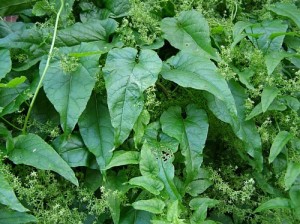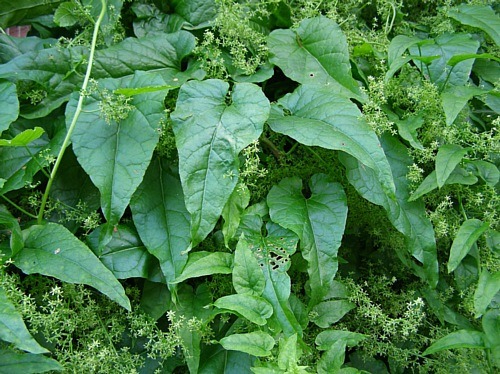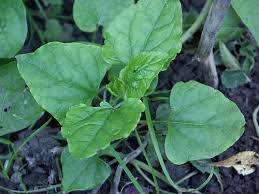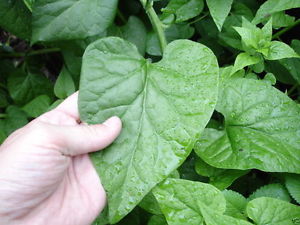 As the Grand Solar Minimum intensifies, more and more of the "regular" green leaf crops we rely on will be reduced in production, but as a substitute,the Spinach Vine is a native of the Caucasus Mountains where it thrives in dappled forest sunlight.
As the Grand Solar Minimum intensifies, more and more of the "regular" green leaf crops we rely on will be reduced in production, but as a substitute,the Spinach Vine is a native of the Caucasus Mountains where it thrives in dappled forest sunlight.
The growing season is short, the winters polar bear cold at higher elevations. It is there that this wild edible vine takes advantage of every no-frost day to put on a fine display of edible leaves.
Spinach Vine
With losses mounting from the unusual cold and ice events wiping out vegetable crops across Europe sparking shortages in the UK and elsewhere, and now late season heavy freeze with high wind fronts ripping across Europe once again, but this time destroying flowering trees and crops. We need to look for substitutes in our vitamin and mineral intake, through other sources, able to withstand colder growing conditions.
The Spinach Vine is a native of the Caucasus Mountains where it thrives in dappled forest sunlight. The growing season is short, the winters polar bear cold at higher elevations. It is there that this wild edible vine takes advantage of every no-frost day to put on a fine display of edible leaves. Closely related to Chenopodiums — Lamb’s Quarters, Fat Hen — it’s edible raw or cooked. That makes it a hot item in vegetable gardens and permaculture plans particularly in cooler climates.
Not surprisingly this wild edible is a cultivated sensation in Scandinavia which is known for having a chilly nights.In the northern growing season the Spinach Vine will manage nine to twelve feet of bushy growth. Interestingly, the lower leaves are heart-shaped on long stems, older leaves more arrow shaped, flowers small and green. Seeds are black and shiny.
Named Hablitzia tamnoides
“Itemized” Plant Profile: Spinach Vine
IDENTIFICATION: Perennial, small its first year, needs a trellis, vine to about 12 feet, many branches, green five-petaled flowers, shoots green and red, ruddy, wrinkled heart-shaped leaves when young, more arrow shaped when older. Seeds, kidney shaped, flattish, biconvex, edge rounded, smooth, glossy black.
TIME OF YEAR: Summer, start in a hotbox, it can take some frost in the fall. If you are going to grow it in a warm climate the seeds need to be kept in the frig for a while, chill hours improve germination.
ENVIRONMENT: In its native range it likes Spruce and Beechwood forests, gullies and ravines.
METHOD OF PREPARATION: Leaves and shoots, raw or cooked. Tastes similar to musky nettles.
Original Article can be Found Here at EatTheWeeds.com
To learn more about what the Grand Solar MInimum is and how it will affect global agriculture. Visit ADAPT 2030 Mini Ice Age 2015-2035 Series on YouTube, which if packed full of resources and information to help you understand where our Earth's climate is heading.



